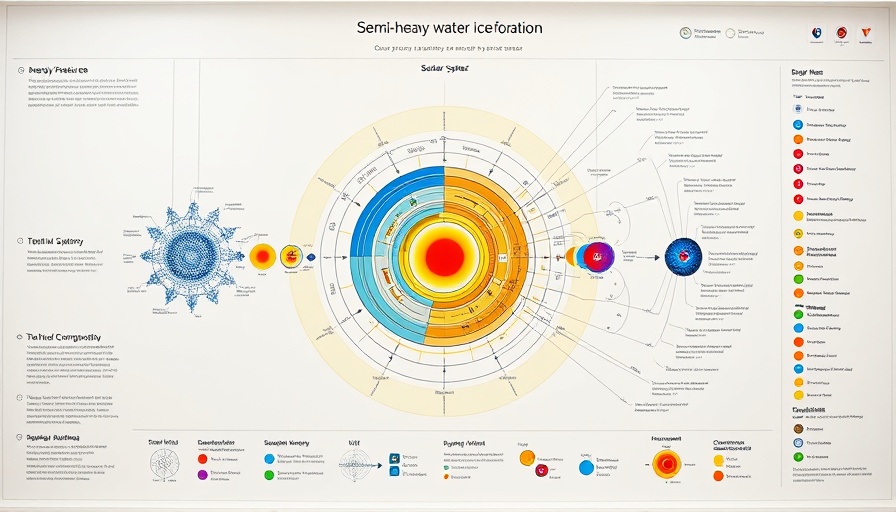
First Detection of Semi-Heavy Water Ice in Space: What It Means for Us
In a groundbreaking discovery, astronomers have detected semi-heavy water ice (HDO) around a young sun-like star for the first time. Led by researchers from Leiden University in the Netherlands and the National Radio Astronomy Observatory in Virginia, this detection significantly bolsters the idea that some of the water in our solar system may have formed long before our sun and planets.
The Importance of Water in the Universe
Water is fundamental to life as we know it, and understanding its origins is essential for piecing together the history of our solar system. Deuterium, the heavier isotope of hydrogen, provides insight into the conditions under which water forms. In various celestial bodies, the presence of semi-heavy water is considered a marker that the water likely formed in cold, dark environments, such as the vast dust clouds that lead to star formation.
Investigating the Origins of Solar System Water
Before this study, astronomers struggled to measure the water deuteration ratio in solid ice states, as most observations had only been taken from gases, where chemical compositions can easily change. Using the James Webb Space Telescope (JWST), researchers were able to observe a remarkably clear signature of semi-heavy water ice in the protostellar envelope surrounding a star named L1527 IRS.
The Role of James Webb Space Telescope
Katie Slavicinska, a Ph.D. student at Leiden University and lead author of the study, highlights the capabilities of JWST, stating, "Now, with the unprecedented sensitivity of Webb, we observe a beautifully clear semi-heavy water ice signature toward a protostar." This development represents a significant leap in the tools available to scientists in studying the cosmos.
Future Implications and Cosmic Connections
The implications of this research extend beyond just the study of our solar system. Understanding the formation of water could provide insights into other star systems and help determine if life is possible elsewhere in the universe. “This discovery could pave the way for questions about the potential for habitable environments on exoplanets that form under similar conditions,” notes a senior researcher.
Conclusion: A Step Towards Understanding Our Cosmic Origins
The detection of semi-heavy water ice not only enriches our understanding of the origins of water in the solar system but also opens new possibilities in the quest for extraterrestrial life. As telescopes like JWST continue to expand our observational capabilities, the universe's secrets will slowly begin to unfold. Stay informed about future discoveries as we explore the depths of space and uncover the mysteries of our cosmic origins.
 Add Row
Add Row  Add
Add 




Write A Comment